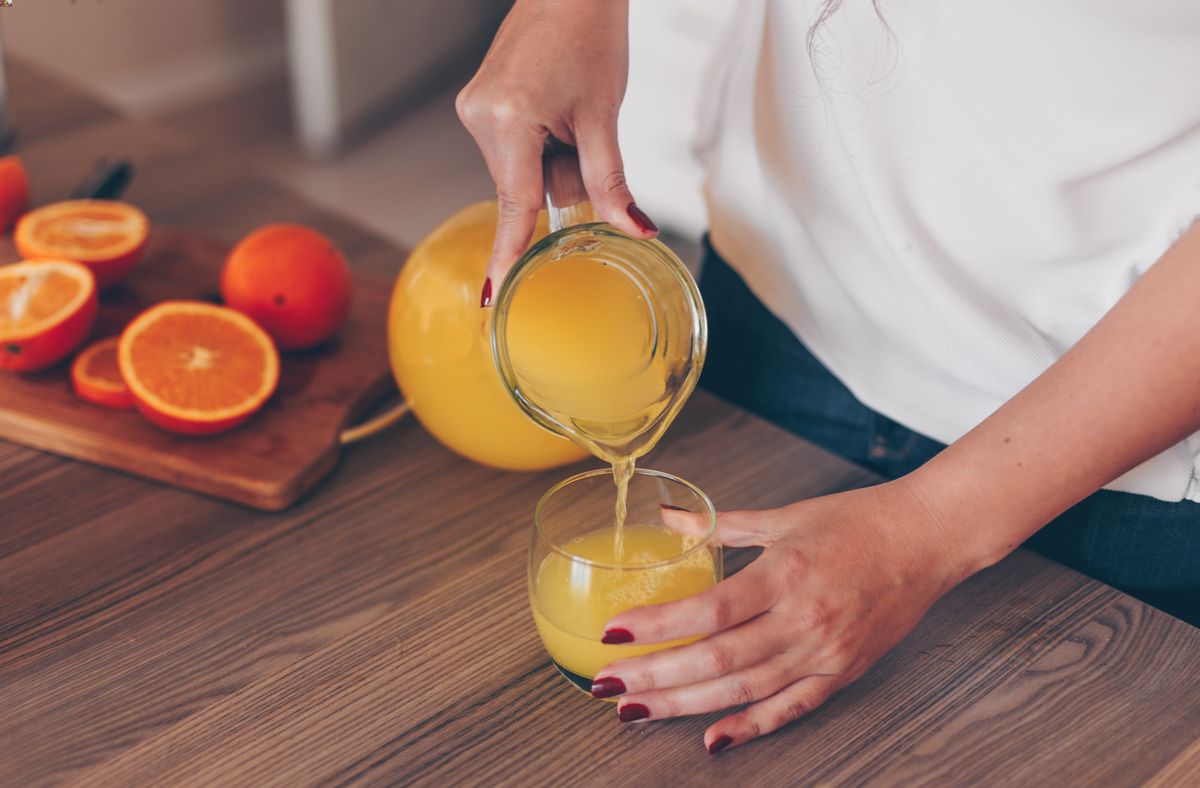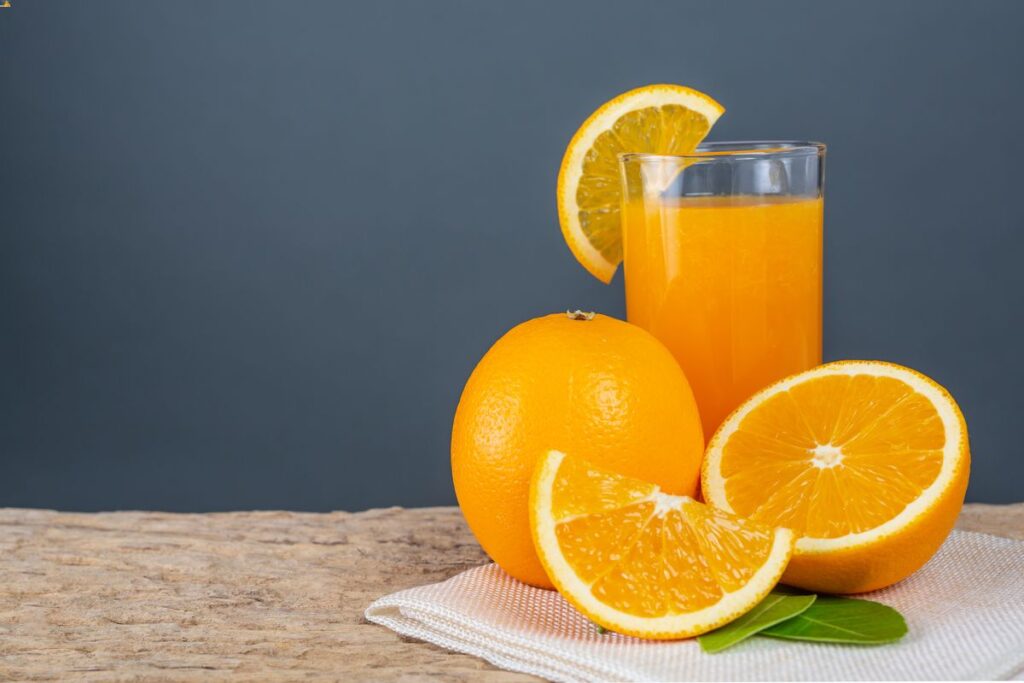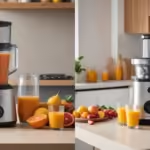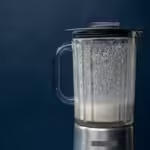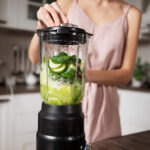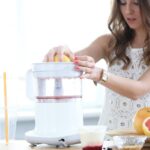Homemade orange juice has gained immense popularity in the USA, with approximately 40% of households preferring to make it at home, according to recent statistics. This preference is largely due to the perceived freshness and control over ingredients.
In terms of nutritional value, homemade orange juice is rich in vitamin C, antioxidants, and essential minerals, making it a wholesome choice. Its naturally sweet and tangy taste appeals to a wide range of palates, offering a refreshing and delicious beverage option.
Homemade orange juice is often preferred over readymade options because it allows individuals to control the quality of the ingredients and avoid added sugars and preservatives commonly found in commercial juices. Additionally, the act of juicing oranges at home offers a more authentic and satisfying experience, ensuring that each glass is a burst of genuine citrus goodness.
Curious to learn how to juice an orange without a juicer and craft this citrus delight at home? Stay with us to unveil the secrets of this wholesome art.
What Should You Know Before Make Homemade Orange Juice:
Before making homemade orange juice, here are the key points you should know:
Before making homemade orange juice, here are the key points you should know:
- Selecting Oranges: Choose ripe and vibrant oranges. Look for ones that are heavy for their size, as this indicates juiciness.
- Washing: Rinse the oranges thoroughly under cold running water to remove any dirt or contaminants on the peel.
- Room Temperature: For maximum juice extraction, allow the oranges to come to room temperature before juicing. This softens the fruit and makes it easier to juice.
- Tools: Gather your tools, including a knife or citrus peeler, cutting board, fine-mesh strainer or cheesecloth, a bowl or pitcher, and a juicer (optional).
- Alternative Methods: Research alternative methods such as using forks, spoons, or your hands for juicing if you don’t have a juicer.
- Blending Option: Consider blending oranges for juice, which can provide a different flavor profile and texture.
- Flavor Enhancements: Explore flavor variations by adding herbs, and sweeteners like honey or agave, or experimenting with spices.
- Storage: Decide whether you’ll consume the juice immediately or need to store it. Properly store any leftover juice to maintain freshness.
- Serving: Think about how you’ll present and serve your homemade orange juice. Temperature and garnishes matter for an appealing presentation.
- Safety and Hygiene: Maintain a clean and hygienic workspace. Practice safe handling of citrus fruits to avoid contamination.
By considering these points, you’ll be well-prepared to make delicious homemade orange juice with ease.
Nutrient Facts of Homemade Orange Juice:
The approximate nutrient facts for an 8ounce (248 ml) serving of homemade orange juice:
Calories: 112
Total Fat: 0.5 grams
Cholesterol: 0
Sodium: 2.5 milligrams
Total Carbohydrates: 26 grams
Dietary Fiber: 0.5 grams
Sugars: 21 grams
Protein: 1.7 grams
Calcium: 27mg
Iron: 0.5mg
Potassium: 496mg
Antioxidants: Orange juice is rich in antioxidants, including flavonoids and carotenoids.
Which Orange is the Best for Orange Juice:
There are numerous varieties of oranges, each with its unique flavor, sweetness, and intended use. Some popular types of oranges include:
- Navel Oranges: These are sweet, seedless, and easy to peel, making them great for snacking and fresh juice. They are typically in season from late fall to early spring.
- Valencia Oranges: Known for their juiciness, Valencia oranges are often used for making orange juice. They are typically in season from late spring to midsummer.
- Blood Oranges: These oranges have distinctive red or maroon flesh and a sweet-tart flavor. They are excellent for both eating and juicing.
- Cara Cara Oranges: These have pink to reddish-pink flesh and are sweeter and less acidic than traditional oranges. They are great for eating fresh.
- Mandarins (Clementines, Satsumas, Tangerines): While not true oranges, these are closely related citrus fruits. They are small, easy to peel, and sweet, making them ideal for snacks.
- Seville Oranges: These are bitter oranges and are primarily used for making marmalade and as a flavoring agent in cooking.
How to Juice an Orange Without a Juicer?
The best oranges for home use depend on your preferences and intended use. For fresh orange juice, Valencia and Navel oranges are excellent choices due to their juiciness and sweetness.
Navel oranges are particularly easy to peel and use for snacking as well. Blood oranges and Cara Cara oranges offer unique flavors and are great for eating fresh.
Experiment with different varieties to discover your personal favorite for homemade juice and snacks.
Making one glass of fresh orange juice without a juicer is easy and requires just a few simple steps. Here’s a straightforward procedure:
Ingredients:
- 23 medium-sized oranges (for one glass of juice)
Equipment:
- Knife
- Fork
- Spoon
- Bowl or glass
- Fine mesh strainer or cheesecloth (optional)
Procedure:
Step 1: Prepare the Oranges: Start by washing the oranges thoroughly under running water to remove any dirt or contaminants from the peel. Pat them dry with a clean towel.
Step 2 Cut the Oranges: Using a sharp knife cut the oranges in half horizontally. This will expose the juicy flesh inside.
Step 3 Juicing the Oranges by Hand
- Hold the Orange: Take one half of an orange, and hold it over a bowl or glass. You want the cut side of the orange to be facing down towards the container.
- Pierce the Flesh: With the orange half in your hand, use a fork to pierce the flesh of the orange. Insert the fork’s tines into the orange’s flesh, and press down gently.
- Twist and Squeeze: After piercing the orange, gently twist the fork while maintaining downward pressure. This twisting action helps release the juice from the orange segments. As you twist, the juice will start to flow out of the orange.
- Use a Spoon: You can also use a spoon to help extract more juice. Insert the spoon into the orange half and press it against the flesh while rotating the spoon. This will help release additional juice.
- Repeat for All Halves: Continue this process for all the orange halves you intend to juice. You can adjust the number of oranges depending on how much juice you want to make.
Step 4 Strain (Optional): If you prefer pulp-free juice, strain the freshly squeezed juice through a fine-mesh strainer or cheesecloth into your glass. This step is optional, as some people enjoy the pulp in their juice.
Step 5 Serve and Enjoy: Pour the freshly squeezed orange juice into a glass. You can add ice cubes for a refreshing touch if desired. Serve immediately for the best taste and maximum freshness.
Quantity: Using 23 medium-sized oranges should yield approximately 1 glass (about 8 ounces or 240 ml) of fresh orange juice.
Juicing Time: It should take just a few minutes to prepare and juice the oranges by hand. It’s a simple and quick way to enjoy a glass of delicious and freshly squeezed orange juice without the need for a juicer.
Which Method is Best for Orange Juice? By Hand vs.By Juicer
The choice between juicing oranges by hand and using a juicer depends on your preferences and specific circumstances. Each method has its advantages and considerations:
Which Method is The Best for Orange Juice? By hand vs. By Juicer:
Juicing Oranges by Hand:
- Pros:
- Simplicity: Juicing by hand requires minimal equipment, making it accessible to most people.
- Cost-effective: No need to invest in a juicer, making it a budget-friendly option.
- Easy cleanup: Fewer parts to clean, and many can be washed by hand or in a dishwasher.
- No electricity needed: You can juice oranges by hand even during power outages or when traveling.
- Cons:
- Labour-intensive: Juicing multiple oranges by hand can be time-consuming and tiring.
- Lower yield: Handsqueezing may not extract as much juice as a juicer, potentially wasting some juice.
Juicing Oranges by Juicer:
- Pros:
- Efficiency: Juicers are designed to extract maximum juice from oranges quickly and with minimal effort.
- High yield: Juicers typically extract more juice compared to manual methods.
- Variety: Some juicers can handle a range of fruits and vegetables, offering versatility in the kitchen.
- Pulp control: Many juicers allow you to adjust pulp levels to suit your preference.
- Cons:
- Cost: Juicers can be an upfront investment, with prices varying based on features and quality.
- Cleaning: Some juicers have multiple parts that can be more challenging to clean, although many are dishwasher-safe.
- Space: Juicers can take up counter or storage space in your kitchen.
If you’re looking for simplicity, don’t juice oranges frequently, or prefer a hands-on approach, juicing by hand can be a practical choice.
On the other hand, if you regularly enjoy fresh orange juice, want higher yields, and value efficiency, investing in a good-quality juicer may be worth it.
Ultimately, the “best” method depends on your priorities, including convenience, budget, and how often you plan to make orange juice.
FAQs:
How do I prevent seeds from getting into the juice?
To avoid seeds in your orange juice, use a fine-mesh strainer or cheesecloth when pouring the juice into a glass. This simple step helps keep your juice seed-free.
How long can I store homemade orange juice, and what’s the best way to keep it fresh?
Homemade orange juice is best enjoyed fresh, but you can store it for up to 2-3 days in the refrigerator. Use a sealed container to minimize exposure to air, which can cause oxidation and affect the taste.
What are some creative ways to use leftover orange peels after juicing?
Don’t throw away those orange peels! They can be used for making zest, adding flavor to recipes, or even creating homemade citrus cleaners. We’ll share some exciting ideas for putting orange peels to good use
Are there alternative methods to juicing oranges by hand?
Certainly! If you don’t want to juice oranges by hand, you can explore methods like using a fork, spoon, or even blending the oranges.
Related Articles :
Choosing the Best Orange Juice Machine: A Comprehensive Guide 2023
The Best Citrus Juicers for Home Use: 6 Top Citrus Juicers Review
